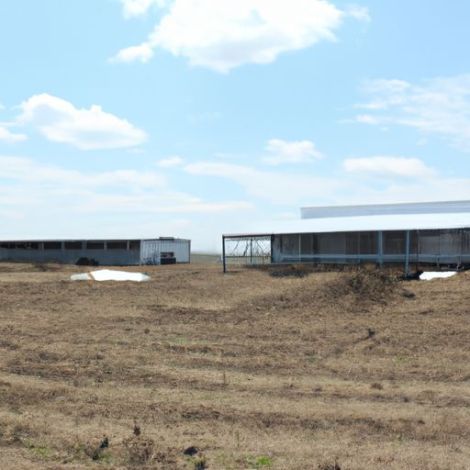Table of Contents
Benefits of Using Steel Buildings for Farming Purposes
Steel buildings have become increasingly popular in the farming industry due to their numerous benefits and advantages. From housing livestock to storing equipment, steel buildings offer a versatile and cost-effective solution for farmers looking to expand their operations. In this article, we will explore the various benefits of using steel buildings for farming purposes.
One of the primary advantages of steel buildings is their durability and longevity. Unlike traditional wooden structures, steel buildings are resistant to rot, mold, and pests, making them ideal for housing livestock and storing feed and equipment. Steel buildings are also able to withstand harsh weather conditions, such as heavy snow loads and high winds, ensuring that your farm remains protected year-round.
In addition to their durability, steel buildings are also highly customizable and versatile. Whether you need a small chicken coop or a large barn for your cattle, steel buildings can be designed to meet your specific needs and requirements. With a wide range of sizes, shapes, and configurations available, farmers can easily customize their steel buildings to accommodate their livestock and equipment.
Furthermore, steel buildings are quick and easy to construct, saving farmers both time and money. Prefabricated steel buildings can be assembled in a fraction of the time it takes to build a traditional wooden structure, allowing farmers to get their operations up and running faster. This quick construction process also minimizes disruption to the farm, ensuring that productivity is not compromised.
Another benefit of using steel buildings for farming purposes is their low maintenance requirements. Unlike wooden structures that require regular painting and repairs, steel buildings are virtually maintenance-free. This not only saves farmers time and money but also ensures that their buildings remain in top condition for years to come.
Steel buildings are also environmentally friendly, as they are made from recycled materials and can be recycled at the end of their lifespan. This makes them a sustainable choice for farmers looking to reduce their environmental impact and carbon footprint. Additionally, steel buildings are energy-efficient, as they can be insulated to regulate temperature and reduce heating and cooling costs.
In conclusion, steel buildings offer numerous benefits for farmers looking to expand their operations and improve their efficiency. From their durability and longevity to their customization and quick construction, steel buildings provide a cost-effective and versatile solution for housing livestock, storing equipment, and protecting crops. With their low maintenance requirements and environmental sustainability, steel buildings are an excellent choice for farmers looking to invest in the future of their operations. Whether you are a small-scale farmer or a large commercial operation, steel buildings can help you achieve your farming goals and ensure the success of your business for years to come.
How to Design and Construct Prefab Chicken Farm Buildings for Efficient Production
When it comes to designing and constructing prefab chicken farm buildings, efficiency is key. These structures play a crucial role in the success of a poultry operation, providing a safe and comfortable Environment for the birds while also maximizing productivity. In this article, we will discuss some important considerations to keep in mind when planning and building prefab chicken farm buildings.
One of the first things to consider when designing a prefab chicken farm building is the layout. The layout of the building should be carefully planned to ensure that it maximizes space and allows for efficient movement of both the birds and the farm workers. It is important to consider factors such as the number of birds that will be housed in the building, the size of the birds, and the equipment that will be used in the operation.
In addition to the layout, it is also important to consider the materials that will be used in the construction of the prefab chicken farm building. Steel buildings are a popular choice for poultry operations due to their durability and strength. Steel buildings are also easy to maintain and can withstand the harsh conditions that are often present in a poultry farm. Aluminum profile prefab buildings are also a good option, as they are lightweight and easy to assemble.
When designing a prefab chicken farm building, it is important to consider the ventilation and lighting needs of the birds. Proper ventilation is essential to ensure that the birds have access to fresh air and to prevent the buildup of harmful gases such as ammonia. Adequate lighting is also important, as it can help to regulate the birds’ circadian rhythms and promote healthy growth and development.
Another important consideration when designing a prefab chicken farm building is biosecurity. Biosecurity measures are essential to prevent the spread of disease and to protect the health of the birds. This includes measures such as controlling access to the farm, Disinfecting Equipment, and implementing strict hygiene protocols.

In addition to designing the prefab chicken farm building, it is also important to consider the construction process. Prefabricated Buildings are a popular choice for poultry operations, as they can be quickly assembled on-site and are often more cost-effective than traditional construction methods. When constructing a prefab chicken farm building, it is important to work with a reputable contractor who has experience in building poultry facilities.
Once the prefab chicken farm building is constructed, it is important to regularly maintain and inspect the structure to ensure that it remains in good condition. Regular maintenance can help to prevent costly repairs and ensure that the building continues to provide a safe and comfortable environment for the birds.
In conclusion, designing and constructing prefab chicken farm buildings requires careful planning and attention to detail. By considering factors such as layout, materials, ventilation, lighting, biosecurity, and construction, poultry producers can create a building that is efficient, productive, and conducive to the health and well-being of the birds. With the right design and construction practices in place, prefab chicken farm buildings can help to maximize productivity and ensure the success of a poultry operation.
